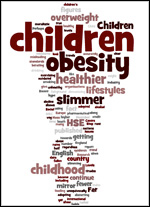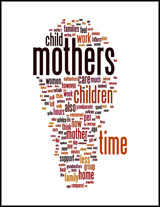Shopping Malls: The New Village Green
By Robin Fox
The creation of suburbs on a vast scale in post-WWII USA created a new kind of human community: one without a center. There was no plaza or piazza, no tribal dancing ground, no market or fairground, no ceremonial center common to all the inhabitants, and no common area for trading, gossiping, and just hanging out. For all these purposes the suburbanites - often living in what had been wilderness until the huge tracts were laid down - had still to trek into the nearest towns. But the towns became more and more run-down and dangerous, and, above all, parking was a nightmare. The people of the burbs were wholly dependent on their cars, for there was no public transport; the burbs were premised on the universal use of the car.
Enterprising businessmen saw a chance to usurp the role of the dying towns as market and entertainment centers, and began to build mammoth shopping malls with acres of parking in the still unclaimed wilderness areas near the burbs. As the towns continued to decline, these malls - growing ever larger and more elaborate - became the new shopping centers, and even the city dwellers preferred to drive out to them rather than shop on the high street. (In an attempt to revive downtowns, city malls have been built. But these are necessarily on a smaller scale, and there is still the parking problem.) The malls were conceived as consumer paradises, with everything meant to entice and pamper the shopper. They became totally enclosed and climate controlled, with wide arcades, piazzas with trees, fountains and plants, and gentle escalators to upper floors. Modern technology enabled them to be large, light, and airy, with easy movement for prams so as to encourage family shopping. Every type and kind of shop was represented, but there was no major food-shopping area (the malls were smart enough not to try to compete with the already successful supermarkets). To cater to the hungry shopper, fast food shops early made an appearance - pizza, hamburgers, fish and chips, etc. These made sense. People often came considerable distances and needed to eat, but at the same time the eateries encouraged people to stay longer and spend more. What is more, they were the kind of places where the whole family could go, and this encouraged "family expeditions" to the malls. Soon more ambitious eateries moved in, and now some malls have a whole range of them: from sit-down specialist restaurants to the ubiquitous pizza parlor, with pubs and gourmet health food in between.
There is no mall built nowadays without a cinema, usually showing two to six films concurrently. But the idea behind the cinemas was not simply to provide entertainment: they were intended as a dumping ground for youngsters while the parents got on with the serious business of spending the family income. Only PG films are shown - no "adult" stuff here. The malls in fact catered essentially to the affluent adults.
But a strange (or was it?) thing happened on the way to the mall. What had started out as a purely commercial venture rapidly became subverted to social uses that have little to do with trading. For a start, the encouragement of "family shopping" - the whole family spending the better part of the day there - turned the malls into family meeting places. It became the weekend thing just to "spend the day" in the mall - shopping or not. Often very little shopping was done. People window shopped, tried the different eateries, bought from a choice of literally hundreds of kinds of ice cream, sent the kids to a movie while they had a "nice" meal by themselves, wheeled the prams around the wide arcades, and let the little ones play around the benches and tubs. In short, the mall began to look very like the fair on the village green.
More significantly, the teenagers, tired of playing around the suburban streets or the schoolyard, began to take over the mall. Teenagers need somewhere to hang out, and the burbs were notoriously lacking in the equivalent of the high-street drug store. There was no high street in the burbs. The mall became the new high street, the new town center, the new village green. The mall was usable in all weathers, there was no entrance fee, there was no harassment. It was all very public and, hence, safe for girls. And malls are colorful and exciting social places. The bustle and the movement, the tremendous variety of things and places, the food teenagers love, and even movies. But most of all, just hanging out, meeting friends, making friends, drinking coke, gossiping, joking, making dates. And all in a concentrated space - not stretched out over thousands of acres of suburb.
There are not that many shops dedicated to teenagers. A few sell jeans and tee shirts and they are popular, and of course the record stores do a brisk trade. But teenagers do not spend that much time actually shopping, to the chagrin of the owners. They mostly spend on the fast food, ice cream, and cinemas. No. They are not there to shop, they are there to be there: in their own words, to hang out. After some initial resistance and concern, the owners seem reconciled to this turn of events. It keeps the parents happy, and the parents spend there. The teenagers have very little record of crime or even disturbance in the malls. They are happy there; unsupervised and unharrassed by adults, they cruise, socialize, and munch endlessly.
As an age group, they seem largely to be between eleven and sixteen. Older teenagers tend to regard "malling" as a phase to be grown out of for more sophisticated things, but the younger ones have created a whole lifestyle around the mall, with customs and clothing peculiar to its environment. They create "looks" and styles in mixing and matching clothing items that have the originality of haute couture and certainly as much care and concern. They invent rules of behavior - no making out in public, for example - that seem to be kept without policing. They are almost never violent or vandalistic (the owners soon noticed this), for they have to share the space with a majority of adults, and everything is in public view. But their intentions are the opposite of random violence. They are obsessed with the social contacts and the parade and display. The whole atmosphere of the mall - the commercial bustle, the elegant facades and shops, the hygienic atmosphere and furnishings, the trees and seats, the family at spend and play - all contribute to an air of calm and peaceful activity in which any kind of even rowdiness would be so out of place it would deeply embarrass those provoking it. And no teenager likes to be embarrassed before peers. Rowdiness in the mall would be like shouting in the library.
The original intentions of the builders then - to make a pleasant and convenient place to shop for the suburbanites - have been subverted to another and obviously more important social use: providing a new village green/town center for the otherwise amorphous burbs. The owners and the communities have come to accept this fully. Social events now take place in the malls. "Live" entertainment, from string quartets to rock groups, is arranged there. Motor shows take up the large spaces, and local artists put up booths in the arcades. There are always stalls collecting signatures for petitions, or selling clothes for good causes. Santa Claus and the Easter Bunny make their regular appearances. Carolers come at Xmas, politicians come to press flesh, and the teenagers wander through it all with their own agendas intact. The malls have even received their ultimate accolade: a role in the universal U.S. folklore of weekly sitcom. An edition of the endlessly charming "Wonder Years" turned on the agony that our young hero, Kevin, went through when his ghastly elder brother got a driving license, thus pre-empting the car in which mom usually dropped Kevin off at the mall. Kevin even had to be nice to and gang up with the hated sibling or lose his ride to the one place above all he wanted to be for eating pizza, going to the movies, and meeting the pretty blonde girl of his dreams: the mall.
When "Murder She Wrote" has an episode on "The Shopping Mall Murders," we'll know that the malls have moved into the realm of the sacred: special places like market fairs and churches, which nurture the soul and the society, not just the body and the economy. They are a monument to social vitality rather than to mammon. They serve the economic end, surely, but in their untutored wisdom the families and the kids have made them serve the difficult end of being human places for human beings. Perhaps there's hope for the affluent society yet.
(P.S. After this was written, the American penchant for gigantism at all costs took over the mall business, and outside Minneapolis the "Mall of America" was built. The scale of the thing is unbelievable, and up to 6 million "visitors" a year are expected in this cross between Park Avenue, Coney Island, and Disney World. This is not the friendly "local" mall but a kind of grotesque satire on consumption and entertainment. I would dearly like it to fail, except that my pension company has invested heavily in it. The moral dilemmas of our times!)





